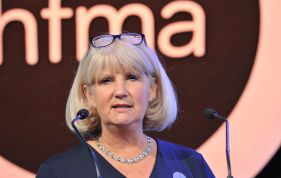Systems must focus on ending out-of-area placements
Speaking to the HFMA mental health conference this week, Ms Murdoch, who is also chief executive at Central and North West London NHS Foundation Trust, said that the mental health sector had seen a flood of referrals to services as society reopened after the peak of the pandemic.
She said the country’s focus tended to be on the overall national elective waiting list. ‘But we don’t talk about the 1.6 million people waiting for planned care treatment in mental health services,’ she said. In addition, there are an estimated 8 million people who would benefit from evidence-based treatment, but don’t even make it to the waiting list or haven’t come forward.
‘That’s because, before the long-term plan and the Five year forward view, mental health was operating in an arena of huge unmet need and we are all trying to close the gap,’ she said.
Ms Murdoch said that some of the increased demand would reduce. ‘But we know some of it won’t and we will continue to see considerable demand that we will have to innovate around on waiting lists,’ she said. Waiting would need to become an ‘active experience’, with materials provided to families, support given to GPs and more groups run for those awaiting advice.
The national director said that pressure on inpatient beds was severe at the moment, a situation that had been slightly increased by the closure of beds as part of the dormitory eradication programme. With bed occupancy running at a ‘red hot’ 93% to 95%, inappropriate out-of-area bed placements were still happening, although all parts of the country have a plan to end them by May 2022.
There was also huge pressure on children and young people (CYP) beds as well. ‘We have absolutely got to end the admissions of people across the country out of their local areas and we have especially got to end it for children and young people,’ she said. ‘A sentinel indicator for the success of the long-term plan, the ability of providers and nascent integrated care systems is “can you localise care”, because you really need to.’
However, she added that workforce pressures were also severe, despite innovation around apprenticeships and attempts to recruit from local communities. She said services would have to ‘mine for workforce through different routes’.
Reflecting on the response to Covid-19, Ms Murdoch said the mental health sector had done ‘incredible’ things in the last year and a half.
More people were accessing talking therapies than ever before. She also highlighted the creation of 70 new or expanded CYP eating disorder teams. Some 10,700 patients started treatment in 2020/21 compared to 8,000 in 2019/20 – which was timely given a global surge in these conditions. Services had been well on the way to meeting the one-week (urgent) and four-week (routine) waiting time and access standards before the pandemic. Although this was now more challenging, it is because teams are seeing more patients than they were designed for.
She also highlighted that mental health providers were achieving a CYP mental health services access rate of 39.6%, ahead of the 35% target. The Five-year forward view for mental health had called for the NHS to reach at least 70,000 more children and young people annually by 2020/21. The actual figure was closer to 90,000. Ms Murdoch said this was a good achievement, although she said there was a long way to go, especially as prevalence had increased since the access targe was created.
She also singled out a 40% increase since the forward view in the CYP workforce and the continued progress in setting up mental health support teams in schools and colleges. The service had also brought some developments forward during the Covid response. 24/7 all age mental health crisis lines had been put in place in five weeks – the goal had been to have in place by 2023/24. While further refinement and more comprehensive links to 111 services were needed, this was a significant achievement.
Related content
We are excited to bring you a fun packed Eastern Branch Conference in 2025 over three days.
This event is for those that will benefit from an overview of costing in the NHS or those new to costing and will cover why we cost and the processes.